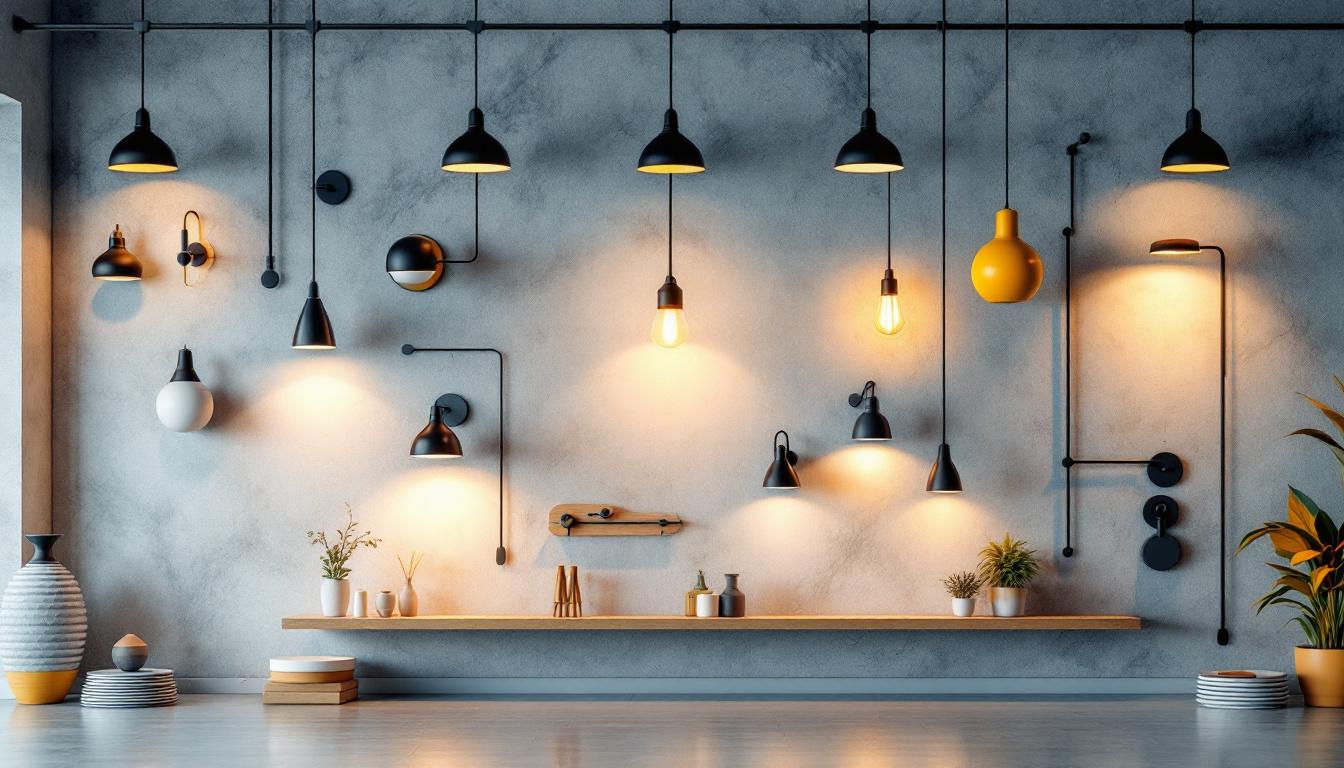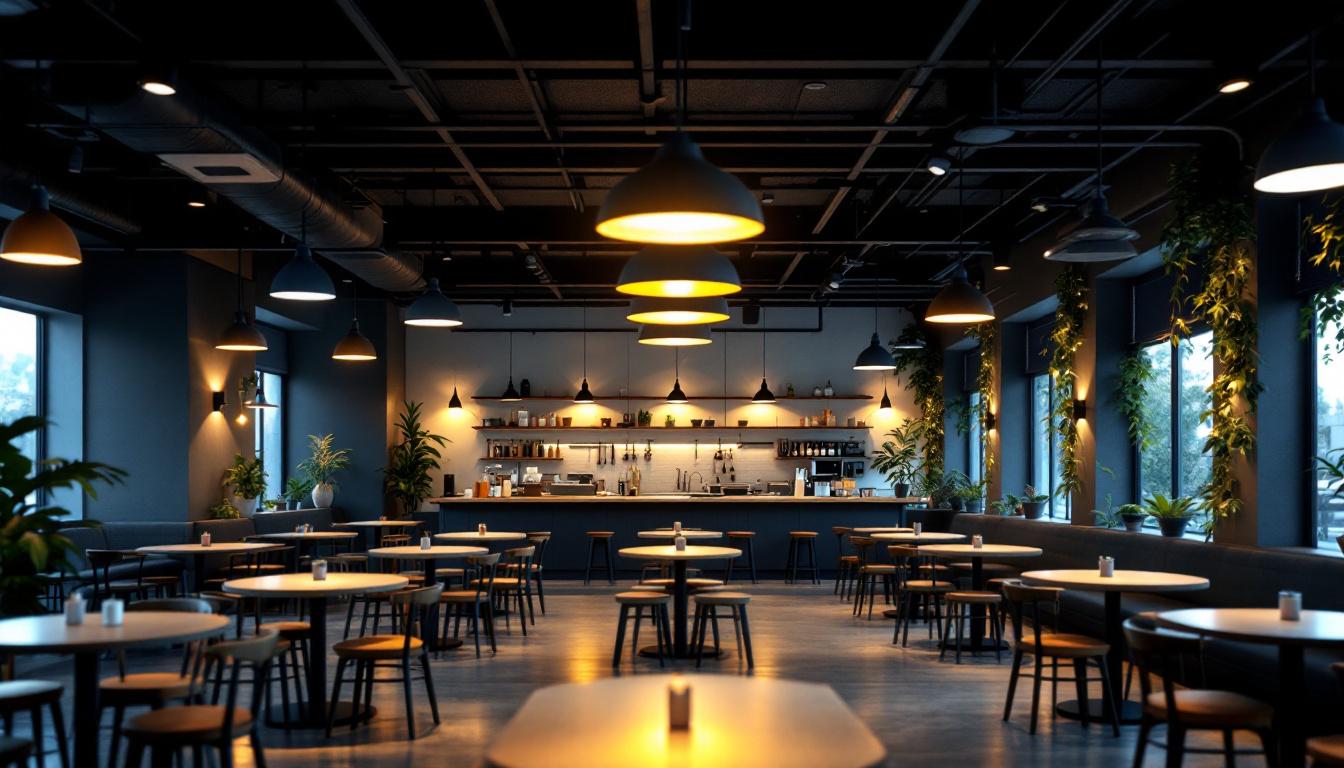
Lighting contractors play a crucial role in designing and implementing effective lighting solutions for various spaces. However, there are often overlooked aspects that can significantly enhance the overall effectiveness and aesthetic appeal of lighting installations. One such aspect is the concept of the fixture wall. This article delves into what a fixture wall is, why it matters, and the common pitfalls that contractors may encounter when dealing with this essential element of lighting design.
A fixture wall refers to a designated space where lighting fixtures are installed, often serving as a focal point in a room or area. This concept extends beyond mere functionality; it encompasses the artistic arrangement of light sources to create ambiance and enhance the visual appeal of the space. A well-designed fixture wall can transform a mundane area into a captivating environment.
Fixture walls are integral to the overall lighting strategy of a project. They can be utilized to highlight architectural features, artwork, or specific areas within a room. By strategically placing fixtures on a wall, contractors can control the distribution of light, creating layers of illumination that add depth and interest.
Moreover, fixture walls can serve practical purposes, such as improving visibility in workspaces or enhancing safety in public areas. Understanding the dual role of fixture walls—both aesthetic and functional—is essential for lighting contractors aiming to deliver comprehensive solutions. For instance, in a restaurant setting, a fixture wall can not only illuminate the dining area but also create a warm and inviting atmosphere that encourages patrons to linger longer, thereby enhancing the overall dining experience.
There are several types of fixture walls that contractors may encounter, each with unique characteristics and applications. These include:
In addition to these common types, there are also innovative approaches to fixture walls that are gaining popularity. For example, biophilic design principles are being integrated into lighting strategies, where fixture walls are designed to mimic natural light patterns and enhance the connection between indoor spaces and the outdoors. This can involve using fixtures that replicate the warm glow of sunlight or incorporating green walls that are illuminated to highlight their natural beauty, creating a serene and inviting atmosphere.
Another emerging trend is the use of smart lighting technology in fixture walls. With advancements in LED technology and smart home systems, contractors can now design fixture walls that allow for customizable lighting settings. This means that users can adjust the brightness, color temperature, and even the color of the lights to suit their mood or the time of day, providing a dynamic and interactive lighting experience that evolves with the needs of the space.
While the concept of a fixture wall may seem straightforward, several key considerations often go overlooked by lighting contractors. Addressing these aspects can lead to more successful installations and satisfied clients.
The choice of fixtures is paramount when designing a fixture wall. Contractors should consider not only the style and finish of the fixtures but also their functionality and light output. For instance, fixtures with adjustable heads can provide versatility, allowing for changes in the lighting scheme as needed.
Additionally, energy efficiency should be a priority. LED fixtures are increasingly popular due to their longevity and lower energy consumption, making them an excellent choice for both residential and commercial applications. The color temperature of the LEDs is also crucial; warmer tones can create a cozy atmosphere, while cooler tones are often preferred in workspaces for better visibility and focus.
Proper placement and spacing of fixtures on a wall are critical for achieving the desired lighting effect. Contractors should take into account the height of the wall, the purpose of the lighting, and the overall design aesthetic. A common mistake is to place fixtures too close together, resulting in uneven lighting and unwanted shadows.
To avoid this, a well-thought-out plan should be developed. This may involve using design software to visualize the arrangement or conducting mock-ups to assess the lighting effect before finalizing the installation. Additionally, considering the wall’s surface texture can impact how light is reflected, further influencing the overall ambiance. For example, a textured wall may scatter light differently than a smooth surface, which can enhance or diminish the intended effect.
Incorporating dimming capabilities into fixture walls can greatly enhance the versatility of the lighting design. Dimmers allow users to adjust the brightness according to the time of day or the specific activity taking place in the space. This flexibility can lead to improved energy efficiency and a more comfortable environment.
Moreover, smart lighting controls can offer additional benefits, such as remote access and programmable settings. Contractors should stay informed about the latest advancements in lighting control technology to provide clients with the best options available. Features like voice activation and integration with home automation systems can significantly elevate user experience, making it more intuitive and seamless. Furthermore, educating clients on how to utilize these technologies can empower them to take full advantage of their lighting systems, ensuring they are satisfied with their investment in the long run.
Despite the importance of fixture walls, several common pitfalls can hinder the effectiveness of lighting installations. Recognizing these issues can help contractors avoid costly mistakes and ensure client satisfaction.
One of the most significant oversights in fixture wall design is failing to consider the room’s intended use. For example, a fixture wall in a dining area should provide warm, inviting light, while a fixture wall in an office space should prioritize functionality and visibility.
Contractors should engage with clients to understand how the space will be used and tailor the lighting design accordingly. This approach not only enhances the functionality of the space but also aligns with the clients’ expectations.
Another common mistake is overlooking the integration of the fixture wall with the overall design of the space. A fixture wall should complement the room’s decor, color scheme, and architectural features. If the fixtures clash with the surrounding elements, the overall effect can be jarring and detract from the intended ambiance.
To achieve a harmonious design, contractors should consider factors such as fixture style, color temperature, and the materials used in the surrounding environment. Collaborating with interior designers can also provide valuable insights into achieving a cohesive look.
Maintenance is a critical aspect that is often overlooked when designing fixture walls. Contractors should consider how easy it will be to access fixtures for cleaning or bulb replacement. Fixtures that are difficult to reach may lead to neglected maintenance, resulting in diminished lighting quality over time.
Incorporating accessible designs, such as adjustable track lighting or fixtures that can be easily removed, can alleviate these concerns. Providing clients with maintenance guidelines can also help ensure that the lighting remains effective and visually appealing for years to come.
As the lighting industry continues to evolve, innovative approaches to fixture wall design are emerging. Staying abreast of these trends can set contractors apart and enhance their offerings.
Layered lighting involves combining different types of lighting—ambient, task, and accent—to create a balanced and dynamic lighting scheme. For fixture walls, this might mean incorporating a mix of wall sconces, recessed lighting, and decorative fixtures to achieve depth and interest.
This technique not only enhances the visual appeal but also allows for greater flexibility in how the space is used. By understanding the principles of layered lighting, contractors can create more engaging and functional environments.
Today’s clients often seek personalized solutions that reflect their unique tastes and preferences. Offering customizable fixture wall designs can cater to this demand, allowing clients to choose the style, color, and arrangement of fixtures.
Incorporating elements such as adjustable lighting angles or interchangeable shades can also enhance the personalization aspect. By providing tailored solutions, contractors can foster stronger client relationships and increase satisfaction.
With growing awareness of environmental issues, sustainable lighting solutions are becoming increasingly important. Contractors can explore options such as solar-powered fixtures, energy-efficient LEDs, and fixtures made from recycled materials.
Promoting sustainability not only aligns with client values but can also reduce long-term energy costs. Educating clients about the benefits of sustainable lighting can help contractors position themselves as forward-thinking professionals in the industry.
Fixture walls represent a vital yet often overlooked aspect of lighting design. By understanding their significance and addressing common pitfalls, lighting contractors can elevate their projects and enhance client satisfaction. From fixture selection and placement to innovative approaches and sustainability, there are numerous factors to consider when designing effective fixture walls.
By staying informed about industry trends and prioritizing client needs, contractors can create lighting solutions that are not only functional but also aesthetically pleasing and sustainable. Embracing the potential of fixture walls can lead to more successful installations and a lasting impact on the spaces they illuminate.
Ready to take your fixture wall designs to the next level? At LumenWholesale, we provide lighting contractors with the high-quality, spec-grade lighting products you need to create stunning, sustainable, and cost-effective installations. Say goodbye to inflated markups and hello to unbeatable wholesale prices, backed by our commitment to quality and convenience. Elevate your lighting projects with our extensive selection and enjoy the ease of bulk buying with free shipping. Discover the value that LumenWholesale brings to your lighting solutions and make your next project shine. Wholesale Lighting at the Best Value.

Discover the key elements that distinguish top lighting contractors in the realm of modern house outdoor lights.

Discover the art of mastering lighting with “Brightness 0,” a comprehensive guide for contractors.

Discover the essentials of LED retrofit recessed lighting compliance in this comprehensive guide for contractors.

Discover essential tips and common pitfalls for lighting contractors in cafeteria projects.